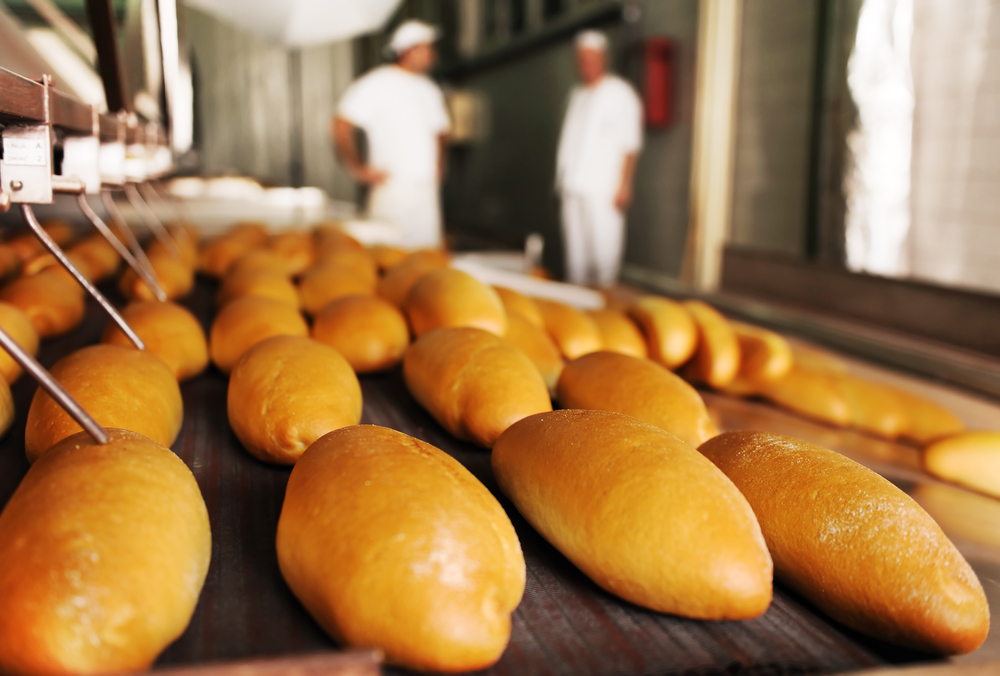During lockdowns, the “stay at home” messaging from the UK Government drastically changed shopping habits, with many consumers moving towards purchasing their groceries online. As a result, food manufacturers have had to become more agile to deal with the growing online demand, including speeding up the vetting process of products while not compromising on food safety standards.
There have also been significant changes in food practices and safety protocols for workers in food-processing facilities. That’s why companies are investing in innovative food safety technology as a practical solution to these issues.
Let’s take a closer look into what’s being implemented.
Vision technology limits human contact
Equipment suppliers have been working hard to develop new technologies to help producers keep up with their workflow.
For example, vision technology like high speed cameras allows teams to store massive amounts of image data, minimising the testing time. Plus, the technology limits the amount of human contact needed in testing situations – an added bonus when many factories are enforcing social distancing measures.
There’s also the TOMRA 5C, an optical nut and dried fruit sorter that can detect minute imperfections and create a clear picture of each and very individual product and foreign material.
These technologies help enhance food safety while reducing the risk of any human-related errors by taking care of the repeatable processes, improving quality and freeing up time for your workers to focus on other business-critical tasks.
Making space on already crowded production lines
The coronavirus restrictions have been extra challenging for smaller producers who either don’t have the money or space to install new detection systems in their production lines.
To combat this, equipment suppliers have created systems that can be modified to help smaller businesses automate their production lines. For example, the Eagle Tall Pro XS from Eagle Product Inspection, a multifunctional x-ray system, provides both automatic rejection and contaminant detection in one compact machine.
Not only does the system cut down on labour due to its ability to perform inline product integrity checks, but also takes up little space – a big plus point for business who might already have a crowded production line.

Automate almost every process with artificial intelligence (AI) technology
The pandemic has made it more difficult for food producers to operate with their usual levels of staff. For example, guidelines published by the Disease Control and Prevention (CDC) for meat and poultry processing workers includes distanced workers and physical barriers.
This has led the food industry to explore the capabilities of AI. Machinery that’s IoT (Internet of Things) enabled, for example, can automate long, manual or complicated processes. AI can also monitor the performance of equipment, check quality of a product and sort raw materials – saving your team time.
Other benefits of AI include:
- Automation of almost every process, decreasing the chances of human error
- An accurate prediction of customer likes, dislikes and desires, helping you deliver an outstanding customer experience
- Speedier production process
- Less maintenance requirements which means less production downtime
Plus, having an integrated ERP system in place (one that connects to your other core business systems) means you’ll be able to feed crucial data into one centralised location. This eliminates the need for manual data inputting and allows your team to quickly access data and identify areas for improvement.
Customisable data dashboards are also possible with advanced analytics tools, giving you a summarised view of the information relevant to you.
End-to-end solutions manage food waste and reduce product recalls
Incidents such as contamination, mishandled products or mislabelled items that prompt a recall can be a large drain on time, money and resources. And that’s not even considering the intangible damage it can do to your brand’s reputation.
End-to-end solutions give your business access to real-time data, allowing you to purchase precise amounts of stock based on accurate information regarding demand.
This helps manage supply chain waste and prevents over-supplying from happening. After all, food items can have a short shelf life and over-supply can result in expired products being thrown away.
An industry-specific ERP system can integrate with your multiple systems and combine data from different sources. This increases overall visibility of your businesses processes which leads to improved supply chain management.
Let’s say a cookie company places 50 orders of flour from a vendor to test a new recipe, for example. When your employee inputs the lot number into the ERP system, they’ll be able to access several pieces of data such as:
- How many times that lot number has been entered
- What orders used it
- Who it was shipped to – simplifying both the origins and usage traceability
An industry-specific ERP system makes it easy to pinpoint each stage where that particular flour was used. Plus, if there was a recall with that specific lot number, your team could easily view where that flour had been used and retrieve the right products from that location faster.
Some other things the best food ERP software will offer are:
- Co and bi-product functionality – which helps you boost revenue by creating multiple end products and reduce waste
- Minimised travel throughout the supply cycle which reduces carbon footprint
- Functionality to help avoid lack of alignment on inventory levels
To achieve outstanding food safety measures, you need the right technology
Technology like automation, AI and machine learning are all offering practical solutions to food businesses in terms of checking food safety and compliance. And once you factor in the changing demands from consumers and the uncertainty over what else the pandemic will bring; the only way companies can keep pace is to implement technology.
Download our guide below to discover how the food and drink industry can successfully adopt technology.

